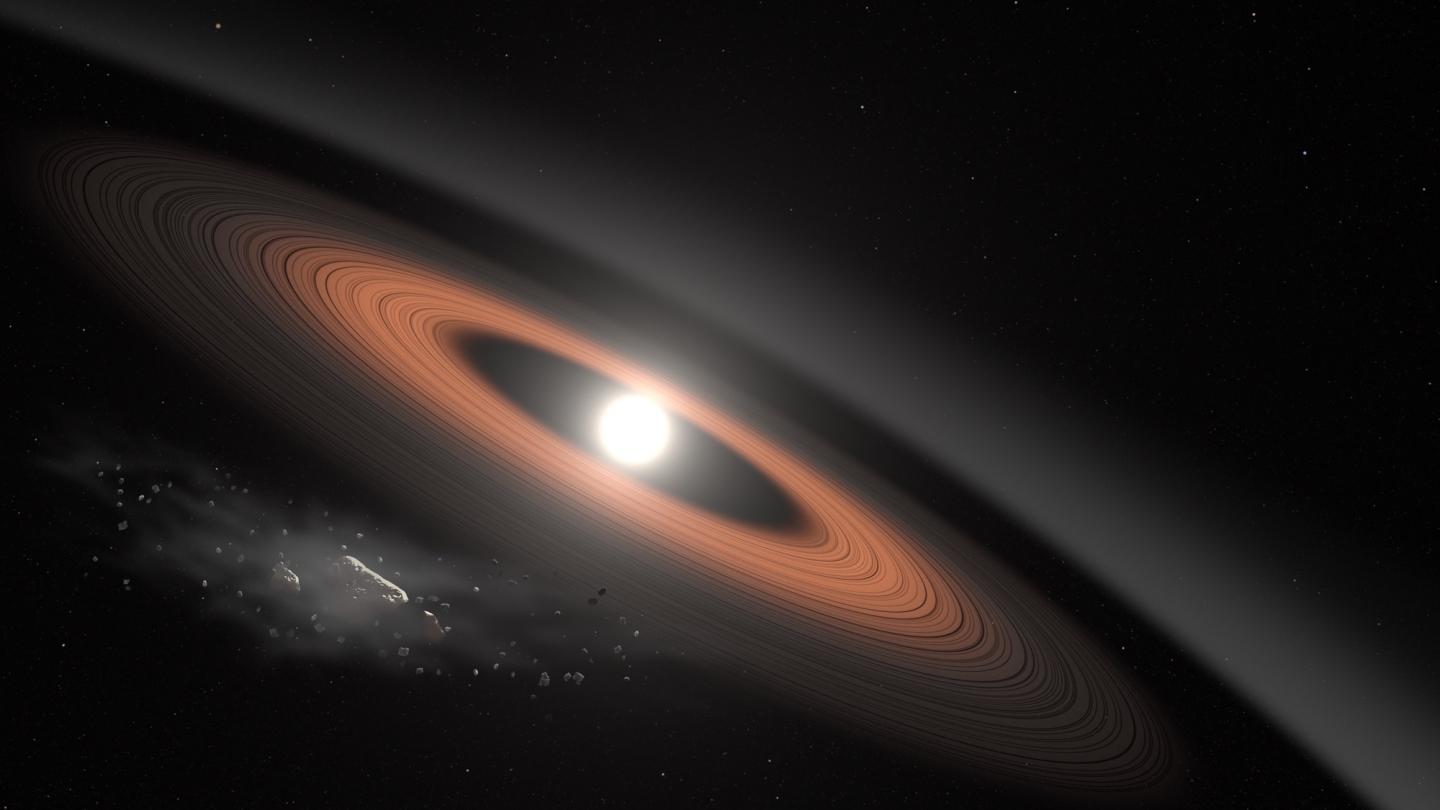White Dwarf Star with Weird Rings Is Spotted by 'Backyard' Sleuths

Astronomers have spotted a puzzlingly old, dusty white dwarf star, the remains of a star like our own sun, and they think the structure may change their understanding of how white dwarfs influence their environments.
The star, formally known as LSPM J0207+3331, seems to be by far the oldest known white dwarf surrounded by a dusty disk. And if the observations hold up, it will be the first white dwarf scientists know of that sports multiple dust rings within that disk, as their current theory suggests.
"This white dwarf is so old that whatever process is feeding material into its rings must operate on billion-year timescales," John Debes, a co-author on the new research and an astronomer at the Space Telescope Science Institute, said in a statement. "Most of the models scientists have created to explain rings around white dwarfs only work well up to around 100 million years, so this star is really challenging our assumptions of how planetary systems evolve."
Related: The Nuclear Battle Between the Earth and Sun
Finding white dwarfs surrounded by stuff isn't unusual, since these stars are the dense corpses of sunlike stars that have shed their gas. But typically, these former suns end up absorbing the solar system rubble that surrounds them.
And the team believes that this white dwarf is about 3 billion years old — which would be nearly three times older than the previous record holder for an ancient ringed white dwarf. That age suggests that some sort of process would need to be refilling the rings, and scientists aren't sure yet what that process could be.
The star's weirdness was discovered through a volunteer science project based out of NASA's Goddard Spaceflight Center and called Backyard Worlds, which is based on infrared data. This particular object looked strange in the infrared wavelengths, which temporarily tricked its discoverer into thinking it was a brown dwarf, a so-called failed star structure that often pops up in the Backyard Worlds data. It took a second look for the team to realize it was actually a brighter, more distant white dwarf.
Breaking space news, the latest updates on rocket launches, skywatching events and more!
And there are still more puzzles to solve about the object. The scientists behind the new research believe that because of the specific infrared signature of the white dwarf, it may actually be surrounded by two separate rings with different characteristics. That's a structure that astronomers haven't seen before around a white dwarf. They hope that once the powerful James Webb Space Telescope launches, its observations will help them solve the puzzle.
The research is described in a paper published Feb. 19 in The Astrophysical Journal Letters.
- How to Tell Star Types Apart (Infographic)
- Exoplanet Hunters Have a New Plan to Spot Hidden 'Migrating' Worlds
- Secrets of Planet Birth Revealed in Amazing ALMA Radio Telescope Images
Email Meghan Bartels at mbartels@space.com or follow her @meghanbartels. Follow us on Twitter @Spacedotcom and on Facebook.
Join our Space Forums to keep talking space on the latest missions, night sky and more! And if you have a news tip, correction or comment, let us know at: community@space.com.

Meghan is a senior writer at Space.com and has more than five years' experience as a science journalist based in New York City. She joined Space.com in July 2018, with previous writing published in outlets including Newsweek and Audubon. Meghan earned an MA in science journalism from New York University and a BA in classics from Georgetown University, and in her free time she enjoys reading and visiting museums. Follow her on Twitter at @meghanbartels.
